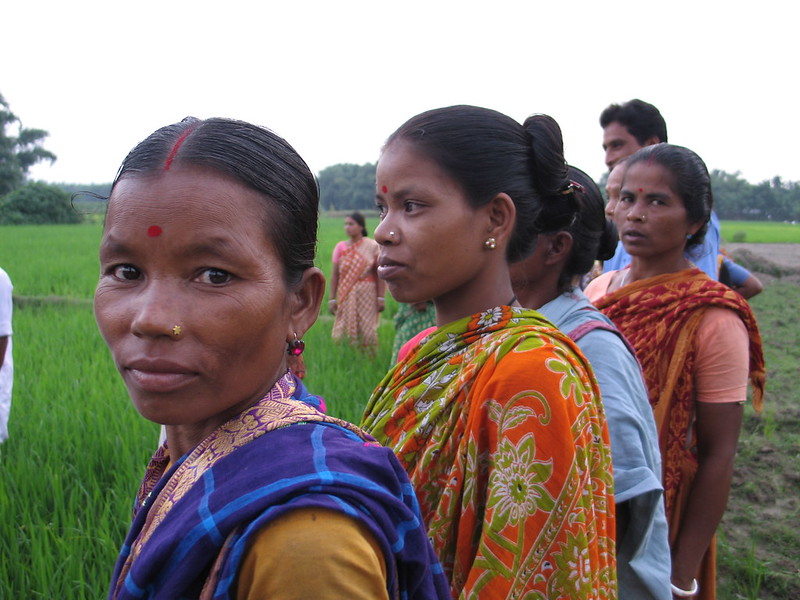Why empowering women in agriculture is essential to global food security

OpEd - The age of agriculture is truly a milestone that forever changed the history of humankind. Prior to agriculture, our ancestors gathered, hunted, and scavenged for sustenance in the wilderness. Around 7,000 years ago, when farming became a widespread alternative practice for producing food, it became the pathway to a more stable food security (1). The ability to grow their own food transformed humans from a nomadic species to settlers. Settlements gave way to villages, towns, and today’s mega metropolises. Our forebears were then able to specialize in a composite of disciplines—medicine, science, engineering, architecture, the arts—that serve as the foundation of the great civilizations past and present.
However, although the modern way of life has little semblance to those of our great ancestors, the importance of agriculture has remained unchanged. In fact, it has acquired a greater urgency than ever as the global population has surged from a mere 4 to 10 million in 10,000 BCE to a projected 9.8 billion by 2050.
Agriculture is under enormous pressure with more people to feed while using fewer natural and other resources to produce healthier food more sustainably. In 2017, an estimated 821 million people, or one in every nine people, in the world suffered from chronic hunger, according to a report by the UN Food and Agriculture Organization (FAO). The agency also reported hidden hunger or malnutrition affects more than 2 billion people—or one in three—around the world (2).
I am pleased to say that the new study, the global burden of chronic and hidden hunger revisited: New panel data evidence spanning 1990–2017 (3), have documented some advancements in reducing both chronic and hidden hunger. But more needs to be done to achieve a zero-hunger world we all envision.
Although modern agricultural technologies such as improved crop varieties associated with better farm and market management practices have tremendously helped in increasing and stabilizing food production in past decades, we also have another means to mitigate chronic and hidden hunger that we have yet to fully unleash: the empowerment of women in agriculture.
There is a common misconception that the founding and rise of agriculture is purely the purview of men while the women sat in the sidelines tending to household chores and raising children. In fact, women were very much a part of establishing agricultural societies and partaking in the physical aspects of early food production. Alongside the men, women were also doing as much labor in preparing the land (4) and their contribution to agriculture has not diminished since. In countries afflicted by devastating wars, it has been the labor of women as a substitute to that of men which allowed to feed not only the military but also the entire population.
In fact, in today’s agriculture, women play a predominant role in many aspects of crop production such as land preparation, planting, transplanting, weeding, harvesting, and postharvest chores. All these on top of managing the household!
What has diminished is the awareness of their deep involvement as many cultures moved towards a patriarchal structure. In such cultural environments, the vast majority of women working in agriculture are underpaid or unpaid. They have become invisible contributors to the global food system. Their ability to contribute to agriculture at their full potential has been hindered by gender-specific constraints that include exclusion from decision-making, lack of intuitional support, and no legal rights to land ownership (5).
Worldwide, the COVID-19 pandemic has brought a tragic loss of human life as well as unprecedented and long-term challenges to food systems, public health, and businesses and financial institutions. In a joint statement, the FAO, International Labor Organization, International Fund for Agricultural Development, and World Health Organization (6) estimated that the pandemic’s economic and social fallout are placing “tens of millions of people are at risk of falling into extreme poverty, while the number of undernourished people, currently estimated at nearly 690 million, could increase by up to 132 million by the end of the year.”
Unfortunately, many of those who are feeling the hardest brunt of the pandemic live in rural communities where gender inequality increases their vulnerability. For several decades now, men have been seeking non-agricultural jobs in urban areas. However, with the lockdowns and loss of livelihood, the flow of earnings they could send back to their families in rural areas has been severely reduced, if not eliminated altogether. It has been up to the women who were left behind to step up and provide for their families. Yet, these are the same women who have been denied access to agricultural interventions, inputs and services; cooperatives and financial institutions; and infrastructure and technologies.
There is one heartbreaking scenario that highlights just how detrimental gender inequality can be at this time of global upheaval. If the “man of the house” who migrated to the city dies from the disease, it could cause his widow to lose ownership of their land if there were no other male heir in the family (7).
It should not take a catastrophic event such as this pandemic to change the rules as well as mindsets that will make agriculture an even playing field for all genders. Empowering rural women does not diminish the roles and responsibilities of men but enhances the productivity of farms, particularly smallholder farms. This is not a theory that we still need to prove. It is fact that has already been proven by women who were given that opportunity. For the sake of global food security and rural prosperity, the time to empower all women is now.
Jean Balié, IRRI Director-General